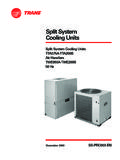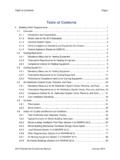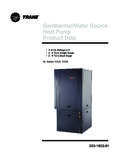Transcription of A Guide to Residential Wood Heating - Housing
1 Natural ResourcesCanadaRessources naturellesCanadaResidentialWood HeatingResidentialWood HeatingA Guide toA Guide to Residential Wood HeatingThis Guide is distributed for information purposes only and does not necessarily reflect the views of the Government of Canada or constitute an endorsement of any commercial productor person. Neither Canada nor its ministers, officers, employees or agents make any warrantywith respect to this Guide or assumes any liability arising from this Guide . Her Majesty the Queen in Right of Canada, 2002 Cat. No. M92-23/2002 EISBN 0-662-31793-9 Aussi disponible en fran ais sous le titre : Le Guide du chauffage au bois r sidentielIntroduction ..2 Chapter 1 Safety Tips Burn It Smart! ..3 Chapter 2 Wood Burning in Canada.
2 5 Chapter 3 Wood Burning and the Environment ..6 Chapter 4 Advanced Wood- Heating Technologies ..7 Chapter 5 Heating Options ..9 Chapter 6 Wood- Heating Accessories ..18 Chapter 7 Installation Safety ..20 Chapter 8 Your Installation Checklist ..32 Chapter 9 The Chimney ..33 Chapter 10 Preventing Smoke, Smells and Cold Hearths ..38 Chapter 11 Maintaining Your Wood- Heating System ..41 Chapter 12 Burning Wood Efficiently ..43 Chapter 13 Purchasing and Preparing Your Fuel Supply ..49 Chapter 14 Comparing Annual Heating Costs ..54 Chapter 15 The Future of Residential Wood Heating ..58 For More Information ..591 Table of ContentsIf you are thinking about buying awood- Heating appliance or alreadyheat your home with wood, youmay be one of 3 million Canadianhouseholds that appreciate theambience and warmth of woodheat.
3 Wood Heating has a longhistory in Canada and, with newavailable technologies, morehouseholds are returning towood for renewable technologies havechanged a lot in the past s advanced combustionsystems burn more cleanly andefficiently than ever. If you are shopping for a wood- Heating appliance or areplanning to replace or upgradeyour current unit, consider onlya highly efficient combustionappliance. You can identify theseadvanced systems by looking forproof of certification to the per-formance standards set by bothCSA International, formerly theCanadian Standards Association,( CSA PerformanceTesting of Solid-Fuel-BurningHeating Appliances ) and Environmental ProtectionAgency (EPA 1990). Certified systems will give you a cleaner,more efficient you are already enjoying thebenefits of wood heat in yourhome, use this Guide to help you make informed decisions onsuch matters as the following: consulting wood- Heating professionals; how to maintain your systemfor safety and peak efficiency; how to purchase and storeyour fuel wood; how to use fire managementtechniques for cleaner, virtually smokeless fires.
4 And many other useful Guide is part of a series ofbuyer s guides on renewableenergy systems for Residential documents on residentialwood Heating include these titles: All About Wood Fireplaces An Introduction to HomeHeating With Wood Buying a High-Efficiency Wood-Burning Appliance Getting the Most Out of YourWood StoveFor electronic versions of theseguides, visit the Web site You can alsoorder copies free of charge bycalling 1 800 387-2000 the benefits of your woodfire in comfort just by taking a few simple , in the blink of aneye, those warm friendly flamesin your fireplace or wood stovecould turn into a devastatingfire. You can easily prevent dangerous situations such aschimney fires by taking theproper safety are some good tips on waysto burn cleaner wood creosote at bayCreosote, a crusty deposit leftbehind by the smoke that driftsup your chimney, can ignite intoa dangerous fire when it buildsup.
5 To reduce it: Burn only clean, well-seasoned wood that has beensplit and dried properly. Drywood lights faster, burns bet-ter and produces less smokethan green wood a majorculprit in creosote buildup. Think twice before you chopup that old coffee table andtoss it into your wood garbage, plastic, parti-cleboard, plywood, salteddriftwood or any otherpainted or treated woodreleases a toxic cloud ofchemicals and can build up t let a small sparkignite a big blaze The best way to start yourfire is with newspaper anddry kindling. Never try to geta blaze roaring with gasoline,kerosene or charcoal starter you will get more firepowerthan you bargained for. Remove ashes from yourstove or fireplace regularlyand store them in a coveredmetal container in a safe areaaway from the side of yourhouse.
6 The sparks in hotashes can easily start fires. Keep all household items drapes, furniture, newspaper and books away from theheat and the stray sparks ofyour woodstove or fireplace. Protect floors from sparkswith a properly fitted screenaround your fireplace. A decorative screen does notprovide devices save lives Install carbon monoxidedetectors and smoke alarms,as required by the NationalFire Code of Canada, and keepa fire extinguisher should never smellsmoke in your house. If you do, it usually meansyour wood stove or fireplacesystem isn t venting properly perhaps the chimney isblocked, a damper is faulty or the fireplace is competingwith your range hood. Notonly are these fire hazards,but they could also lead todeadly carbon monoxide hot new stove If you are using an open fire-place or your wood stove ispast its prime, you might consider buying a new modelwith improved safety and efficiency features.
7 The bestchoice is a high-efficiencystove or fireplace approved for safety by the Underwriters Laboratories of Canada (ULC)or another testing body, andcertified as low-emission bythe EnvironmentalProtection Agency (EPA). Go to the professionals Any new stove or fireplaceshould be professionallyinstalled. Make sure yourexisting unit is inspected andcleaned at least once a yearby a technician certifiedunder the Wood EnergyTechnical Training (WETT)program or, in Quebec, theAssociation des profession-nels du chauffage. 31 Safety Tips Burn It Smart!Healthier Wood Heat The hottest pollution preventer The best way to reduce woodsmoke is by using a high-efficiency wood stove or fireplace, certified low-emission by the EPA. Usedproperly, these products cutemissions by up to 90 percent,and you will see virtually nosmoke coming from yourchimney.
8 More efficient than conventional models, high-efficiency products use up to one third less wood meaning less smoke, lesswork and hearty cost savings. Burn small and burn smart Keep the fire hot and it regularly with splitwood and never let it smoul-der. A smouldering firecreates more smoke. Don t overload your stove or fireplace. Air should move around inside for a cleaner there s s pollution Burn dry, well-seasoned woodthat has been split wood producesunhealthy smoke because it is too wet. Burning garbage, plastic, par-ticleboard, plywood or anyother painted or treatedwood releases a toxic cloudof chemicals don t tossthese items into your energy efficient Make sure your home isenergy efficient by insulatingwalls, caulking windows andrepairing weatherstrippingaround the doors.
9 Don t letyour heat slip through thecracks!Local Air Quality Advisory Under certain weather condi-tions, you will notice thatthe smoke is slow to thin out and hangs in the air forlonger than usual. SometimesCanadian municipalities willissue local air quality advi-sories in which people areasked not to burn wood duringthis time. It s important torespect these was Canada s originalheating fuel. Wood burning continues to be an effective andeconomical way to heat yourhome as a primary heatingsource or as a secondary heatingsource to complement conven-tional oil or gas furnaces, orelectric baseboards. Advances inWood Burning Major advances in the 1990shave made wood burning cleanerand more effective, efficient and convenient than ever. Thefollowing are some of theseadvances: combustion designs that canburn more of the wood andburn it more cleanly and athigher efficiencies; performance standards (CSA and EPA 1990)that identify newer, cleaner-burning units; technology that providesmore efficient Heating whileallowing you to view theflame from behind a specialceramic glass door that willstay clear for long periods; pellet stoves that use com-pressed wood and otherbiomass wastes, capable ofproviding at least 24 hours of unattended, automatedheating; standards that provide clearguidelines for safe installa-tion; and professional training programsfor installers and inspectors toensure that you get depend-able advice and service.
10 As recently as the mid-1970s,basement wood furnaces or sim-ple box stoves burned most ofthe wood in homes. Then camethe evolution to airtight stoves,which were more efficient butcreated more air by environmentalobservers over the issue of smokepollution, stove designers began to develop cleaner-burning products. By the early 1990s,Canadian manufacturers led the way, and new productsreached the , the efficiency ofwood- Heating systems hasimproved significantly. Mostof the new wood-heatingappliances are attractivestoves and fireplaces designedfor the main living areas of a home. They use advancedtechnology and are cleaner-burning. Such appliances,properly installed in the rightplace, can provide primary or secondary heat for yourhome while offering thebeauty of a visible fire.










